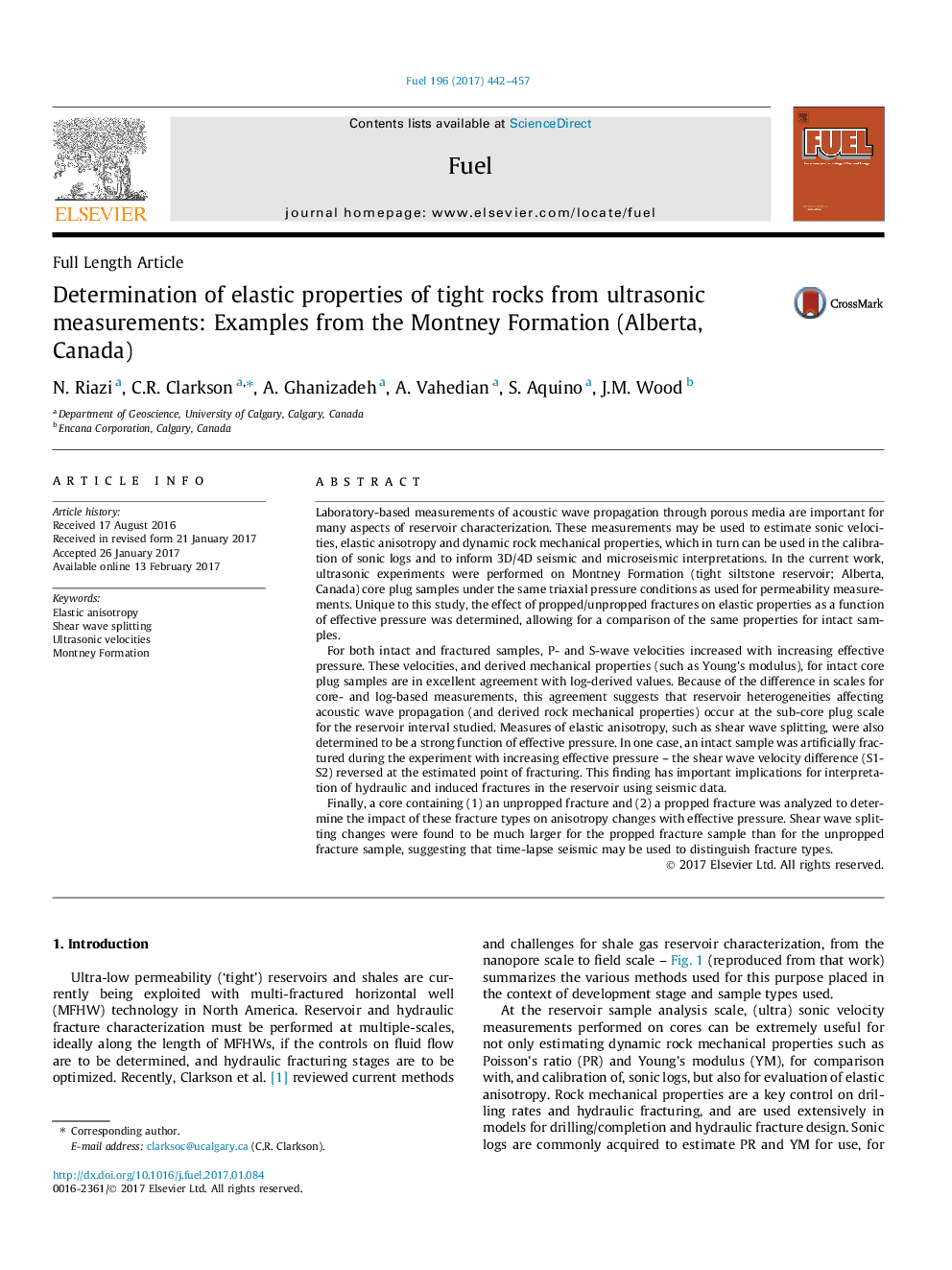| Article ID | Journal | Published Year | Pages | File Type |
|---|---|---|---|---|
| 6475096 | Fuel | 2017 | 16 Pages |
Laboratory-based measurements of acoustic wave propagation through porous media are important for many aspects of reservoir characterization. These measurements may be used to estimate sonic velocities, elastic anisotropy and dynamic rock mechanical properties, which in turn can be used in the calibration of sonic logs and to inform 3D/4D seismic and microseismic interpretations. In the current work, ultrasonic experiments were performed on Montney Formation (tight siltstone reservoir; Alberta, Canada) core plug samples under the same triaxial pressure conditions as used for permeability measurements. Unique to this study, the effect of propped/unpropped fractures on elastic properties as a function of effective pressure was determined, allowing for a comparison of the same properties for intact samples.For both intact and fractured samples, P- and S-wave velocities increased with increasing effective pressure. These velocities, and derived mechanical properties (such as Young's modulus), for intact core plug samples are in excellent agreement with log-derived values. Because of the difference in scales for core- and log-based measurements, this agreement suggests that reservoir heterogeneities affecting acoustic wave propagation (and derived rock mechanical properties) occur at the sub-core plug scale for the reservoir interval studied. Measures of elastic anisotropy, such as shear wave splitting, were also determined to be a strong function of effective pressure. In one case, an intact sample was artificially fractured during the experiment with increasing effective pressure - the shear wave velocity difference (S1-S2) reversed at the estimated point of fracturing. This finding has important implications for interpretation of hydraulic and induced fractures in the reservoir using seismic data.Finally, a core containing (1) an unpropped fracture and (2) a propped fracture was analyzed to determine the impact of these fracture types on anisotropy changes with effective pressure. Shear wave splitting changes were found to be much larger for the propped fracture sample than for the unpropped fracture sample, suggesting that time-lapse seismic may be used to distinguish fracture types.
